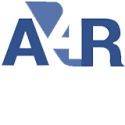Schedule a meeting online
Book sessionHow to Pay Yourself Without Messing Up Your Taxes
By: Ernie Neve
You wear all the hats in your business—but when it comes to paying yourself, it can get confusing fast. How you take money out isn’t just about cash flow; it can affect your taxes, your retirement plans, and even your business’s growth.
Let’s talk about it.
What’s the best way to pay yourself?
It depends on how your business is set up:
Sole proprietor or single-member LLC? You’ll probably just transfer profits to your personal account (aka an “owner’s draw”). Easy—but don’t forget, you’ll still owe taxes on everything you earn.
S-Corp? You need to pay yourself a salary (yes, with payroll taxes), but you can also take “distributions” on top—those usually come with lower taxes if done right.
C-Corp? You’re officially on the payroll, like any other employee. Taking extra money out means paying dividends, which can bring extra tax layers.
How much should you pay yourself?
That’s the tricky part. Too little? You could raise red flags with the IRS. Too much? You might limit how much you can reinvest in your business—or give more to Uncle Sam than necessary.
You want a number that covers your needs, supports your business, and keeps you in good standing tax-wise.
Want to make the most of it?
There’s strategy involved—especially with taxes. From setting up retirement contributions to figuring out the right salary/distribution mix, it’s worth getting it right from the start.
If you’re not 100% sure your current setup is working in your favor, let’s talk. We can help you run the numbers and find the sweet spot.
Shoot us a message or book a time to chat. You work hard—your money should, too.





